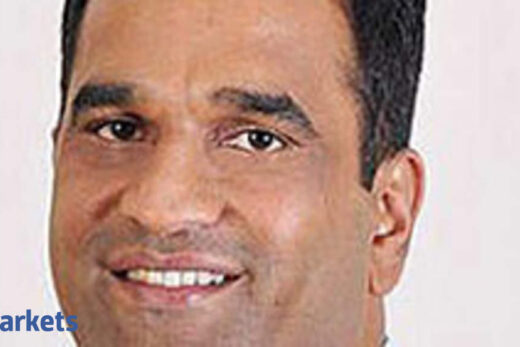It is indeed a carefully thought through and meticulous Budget, envisioning solutions for a number of major issues. It is also aggressive in its approach of funding through one of the highest fiscal deficits and non-tax revenues rather than through increased taxes. The government has followed a consultative approach as a number of suggestions made by various industry forums over time have found acceptance in this Budget.
Finally, governance will be mostly tech-driven with both direct and indirect taxation set to become almost faceless.
Some of the key propositions of the Budget are:
Infrastructure financing – Creation of a DFI
Previously, DFIs were created during the pre-economic liberalisation era. During that period, given the controlled and protected nature of the economy and industries, lending was simpler and the business model of DFIs was uncomplicated. With minimal risk of NPAs, DFIs didn’t shy away from financing even long-term greenfield infrastructure projects.
After the economic liberalisation in 1991, when the industry started opening up and a lot of special benefits to DFIs were withdrawn, the equation suddenly changed. Post 1995, when the SLR status of bonds issued by DFIs were withdrawn, they struggled to stay competitive and relevant. Hence, most of the DFIs converted into commercial banks over time.
As a part of the Budget, the Finance Minister announced plans to introduce a bill to set up a professionally-managed development financial institution (DFI). The proposed DFI would act as a provider, enabler and catalyst for infrastructure financing. The DFI would be capitalised with Rs 20,000 crore and is expected to have a lending portfolio of at least Rs 5 lakh crore within three years.
The Secretary, DEA, has mentioned that one of the existing DFIs may assume this role. The Finance Minister during the interaction with the media also indicated that several other DFIs can come up in the private sector. Onboarding a professional management under a government entity would be key, which would require focus to ensure long-term sustainability and viability of the proposed DFI.
Increasing FDI in Insurance Sector
The Finance Minister has proposed to amend the Insurance Act, 1938 to increase the permissible FDI limit from 49% to 74% in insurance companies and allow foreign ownership and control with safeguards. Under the new structure, the majority of the directors on the board and key management persons would be resident Indians, with at least 50% of directors being independent, and a specified percentage of profits being retained as general reserve.
This would ensure that effective control would be in the hands of the Indian residents. With the right safeguards in place, the increase in foreign investment limit could pave the way for foreign players, which are expected to bring in new technologies, new products and ensure better market penetration. This will also ensure that long-term funds stay invested in India. We think the structure of higher ownership to foreign companies with the management and the majority of the board being with Indian national is a good solution for some other sectors also such as aviation.
Unified Single Securities Market Code
It is proposed to consolidate the provisions of Sebi Act, 1992, Depositories Act, 1996, Securities Contracts (Regulation) Act, 1956 and Government Securities Act, 2007 into a rationalised single Securities Markets Code. Currently, all the existing regulations operate independently. There are issues of common nature, but being dealt by different laws and different authorities, which makes the decision making tough. The proposed change will not only streamline multiple laws and regulations but also the processes to make it efficient.
Additionally, this will avoid any possible conflicts arising due to differences in the various regulatory frameworks. However, it will be critical to understand if Sebi would be the nodal agency responsible for the same.
Debt Financing & Relief on Dividend in REITs/ INVITs
InVITs and REITs have become attractive instruments for raising resources for infrastructure. In order to attract higher foreign investment certain changes were required. Debt financing of InVITs and REITs by foreign portfolio investors will be enabled by making suitable amendments in the relevant legislations. Currently, as per Sebi (FPI) Regulations 2019, an FPI is restricted to invest only in debt securities or other instruments as permitted by RBI for FPIs. Additionally, the budget has also proposed to make dividend payment to REIT/ InvIT exempt from TDS in order to provide ease of compliance.
This would make this instrument more effective and is expected to attract more foreign investments.
Disinvestment and Strategic Sale of PSUs
The Finance Minister has announced a disinvestment target of Rs 1.75 lakh crore for FY22, reduced from the ambitious FY21 target of Rs 2.1 lakh crore, of which only Rs 19,499 cr. (9.3%) has been realised till date.
The key highlight is the approval of the new public sector enterprises (PSE) policy by the Cabinet. This policy defines strategic and non-strategic sectors for the government. Under the policy, the central government will minimise its presence in strategic sectors, while completely exiting in the non-strategic sectors.
The government also proposes to complete all announced disinvestments (
, Shipping Corp, Container Corporation, Pawan Hans, Air India, Neelachal Ispat Nigam) in FY22. Apart from the LIC IPO and IDBI stake sale, the government will also be taking up the privatization of two PSU banks and one general insurance company in FY22.
Monetization of Assets
The Finance Minister has also proposed the setting up of an SPV to undertake the monetization of surplus land with government departments and public sector enterprises. Other initiatives include the introduction of an incentive package for states to disinvest their PSUs.
A National Monetization Pipeline for potential brownfield infrastructure assets has been proposed as a way to monetize operating public infrastructure assets and provide financing options for new infrastructure construction.
Infrastructure assets to be included are NHAI operational toll roads, transmission assets of Power Grid, oil and gas pipelines of GAIL, IOCL and HPCL, AAI Airports in Tier II and III cities, railway infrastructure assets, warehousing Assets of CPSEs among others.
While the new PSE policy and other announced initiatives around asset monetisation are ambitious, its execution would be critical for the government at a time when it needs resources to bridge the fiscal gap and for spending on key policy initiatives. It is also important to note that since FY15, the government has achieved its disinvestment target only twice (FY18 and FY19).
Fiscal Deficit and Additional borrowings
The fiscal deficit for current year 2020-21 is expected to be at 9.5% of GDP and 6.8% for FY 2021-22. This would mean a borrowing of Rs 80,000 cr for the remaining part of the current fiscal year and approximately Rs 12 lakh crore for the next financial year with a gliding path to go down to 4.5% in the financial year 2025-26. This is one of the highest deficits in over 40 years. However, the financing is going towards capital expenditure and investments which could result in economic growth. As a result, the bond markets have taken it in their stride.
Corporate Bond Markets
While the government bond market is generally liquid only in certain maturities, a vibrant corporate bond market is required for holistic growth of markets in India. To instill confidence amongst the participants in the corporate bond market and to generally enhance secondary market liquidity, the government proposes to create a permanent institutional framework. The proposed body would purchase investment grade debt securities both in stressed and normal times and help in deepening and development of the bond market.
Capital quantum, ownership and control of the proposed body would be key parameters to look out for.
Stressed Asset Resolution by setting up a New Structure
To solve the problem of high provisioning on stressed assets by public sector banks and to clean up the bank books, the government has proposed to set up an asset reconstruction company and an asset management company. Together, these two entities would take over the existing stressed assets, consolidate it, and then manage and dispose of the same to alternative investment funds and other potential investors for eventual value realization.
While at present it is unclear who would be funding these entities, we just heard secretary, DFS, say that banks could be funding it. It would also be key to understand whether the process would be in parallel to the NCLT process or is it a pre-resolution process for stressed assets.
Gold Exchanges
In the Budget of 2018-19, the government had announced its intent to establish a system of regulated gold exchanges in the country with Sebi as the regulator. Sebi’s oversight as the watchdog will set in place an appropriate framework for the gold exchanges. Warehousing Development and Regulatory Authority will be strengthened to set up a commodity market ecosystem arrangement, including vaulting, assaying, logistics etc in addition to warehousing.
National Faceless Income Tax Appellate Tribunal Centre
The next level of income-tax appeal is the Income Tax Appellate Tribunal. The government has proposed to make this tribunal faceless with a National Faceless Income Tax Appellate Tribunal Centre. All communication between the tribunal and the appellant shall be electronic. Where personal hearing is needed, it shall be done through videoconferencing. A faceless tech savvy tribunal is an important step forward to ensure ease of compliance.




